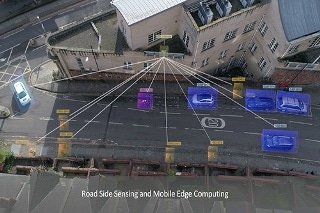Mar 13 2019
Successful completion of the most recent phase of investigations of the £5.5m FLOURISH driverless car project with regards to the requirements of futuristic cyber-physical infrastructure has been reported.
 Professor Robert Piechocki’s work on the project has been focusing on the roadside and digital infrastructure and the level of connectivity required for driverless cars to respond to real-time traffic events. (Image credit: University of Bristol)
Professor Robert Piechocki’s work on the project has been focusing on the roadside and digital infrastructure and the level of connectivity required for driverless cars to respond to real-time traffic events. (Image credit: University of Bristol)
Established by the University of Bristol, one of the members of the FLOURISH consortium, the outcomes of this study offer a fresh look at the potential of connected vehicles to communicate with every component in the system, which includes other connected vehicles as well as the roadside and digital infrastructure.
Digitally connected vehicles have the potential to revolutionise the cities we live in and the way we travel. Our research into the optimum conditions for the robust, effective and resilient transfer of data is the cornerstone of a new customer journey experience.
Robert Piechocki, Professor of Wireless Systems, University of Bristol.
The FLOURISH car trials investigate the most basic conditions required for efficient transfer of data. The emphasis is on the connectivity level needed to respond to real-time traffic events, to perform communication with integrity, and to recognize whether the source of information is dependable. With its diversified topography, the results validated in Bristol can be directly transferred to other cities of the country, in even as well as more challenging terrain. As part of the project, more and more complex scenarios are being tested to guarantee the recommendations it offers and their application at other places.
By enabling the management of a network of driverless cars, we can help transport authorities to improve road safety, ease congestion and tackle the challenge of improving air quality, by offering a genuine alternative to manually driven cars.
Robert Piechocki, Professor of Wireless Systems, University of Bristol.
Moreover, the project has also been investigating the potential for autonomous and connected vehicles to communicate with one another as well as the surrounding infrastructure at frequencies generally associated with WiFi. Often regarded as an enabler of indoor connectivity, its low frequencies can facilitate efficient transmission of data for longer distances.
The final outcomes for data transfer and secure communications will be reported by the FLOURISH team in May 2019.